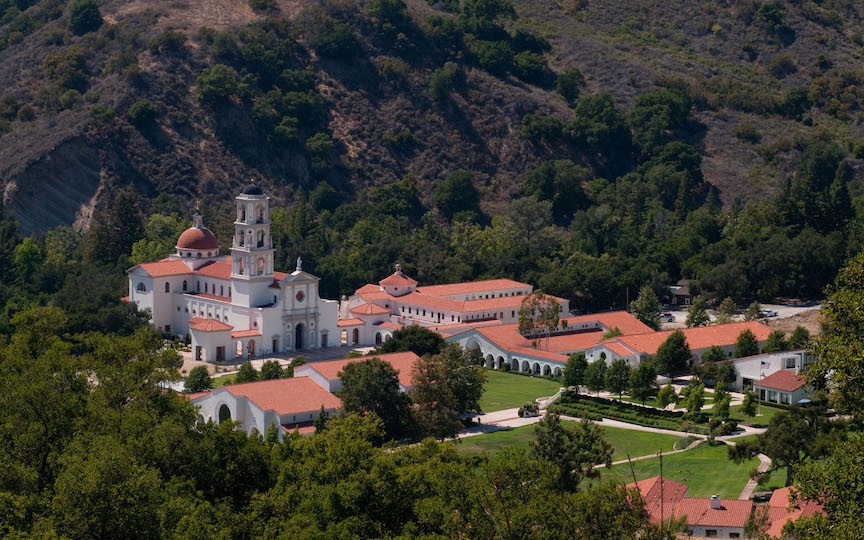Shepherds should smell like the sheep, says Pope Francis.
I do not know what Andres Serrano smells like. I can make a good guess as to his art. He is the fellow who set a small crucifix in a bucket of his own urine (“Piss Christ”), and then took photographs of it. The pope recently honored him with a commendation.
A couple of years ago, the bishop of the diocese where we have lived in the summer took it into his head to demand that parishes remove the steeples from their churches. I believe he was concerned with the expense of upkeep.
The parishioners, those ordinary sheep, did not really want to oblige. When it comes to art and architecture, the sheep don’t go in much for the awkward and ugly.
All my life, I have seen the same game play itself out. Father wants the communion rail removed. The sheep don’t see why that’s necessary, but they go along, grumbling. The bishop wants the pews replaced, regardless of the carvings executed by those men of old who built the cathedral with their own hands. The people don’t want it, but who are they to advise a bishop about what is beautiful?
The snobbery of the modernist is almost axiomatic, for what is modernism if not the rejection, usually with contempt, of traditional forms, or even of form itself? But why should the prelates of the Church ever have gone along with modernism? That is not hard to explain. People in charge of things want very much to appear to be in the know, to be on the cutting edge, to be leading a charge.
They want, so to speak, to get invited to the right parties. So, if the sheep do not warm up to a bucket of piss with the crucified Lord in it, if they consider it to be a blasphemy and a fraud, so much the worse for them. We know better than they do. We took a course on modern art at the university. We understand the deep meaning of it – pause to roll the eyeballs inward while appearing to commune with the divine.
Well, after several generations of fields dusted with poison, most of those ordinary people no longer have any experience of excellence in sacred art, and their priests and bishops are very often in the same position, regardless of where they stand on the mostly nauseating issues of our time.
To smell like the sheep, then, is to try to understand how bare and thin our education has been, even while we have been led to believe that we are wiser and better than our forebears.
You have then the unprecedented opportunity to introduce people to folk traditions when they have been robbed of their own and of any secondary experience of anyone else’s traditions. You can show them that the most glaring problem with Catholic “folk music” is that it is not folk music at all: it has the structure and the melodic characteristics of show tunes meant for soloists, and usually clumsy tunes at that.

We are not talking about Cole Porter, or Richard Rogers and Larry Hart. “He’s gonna wash that sin right out of my soul” – if I had to sing a show tune, at least its verses ought to be clever. But genuine sacred art is for everyone, and it is there, waiting to be noticed again, and to be cherished.
And I do believe that the people will respond. Why not? For the art, in its human and material sources, always did spring up from the deepest and most universal feelings of mankind.
You see Michelangelo’s first Pietà, and though there are a hundred fascinating things that a specialist may say about it, you know immediately what you are looking at, and it overpowers you: she is the essential Mother, mourning over the loss of her son, who lies in her lap, his legs and arms slack, as if they will ever move again.
Or you hear Bach’s Passion According to Saint Matthew, and every time the choir comes in to sing a verse of the Passion Chorale, “O sacred head, surrounded,” you feel a chill of recognition, the stately and haunting melody touches strings in your soul, and you say, “Teach me more.”
Indeed, this gratifying work of restoration and reintroduction is going on in our midst, though Francis seems not to be aware of it, because he hangs around with people like Andres Serrano, and not with people like Duncan Stroik, the architect who builds churches that look like churches, like places that derive their form from the inspirations of divine worship, and not like nuclear power plants, warehouses, stone beetles, or call centers.
When you praise Serrano, you give a stiff arm to countless Catholic artists, composers, musicians, poets, novelists, and architects, whose main obstacles have come not from the sheep but from chancery bureaucrats.
Or from universities that boast of their “Catholic tradition” when they want to separate alumni from their children or their money but otherwise treat it as an old lunatic aunt they hide in the attic, and mass media that are united in nothing but the cheap, the tawdry, the mad, and the obscene.
Such Catholic artists don’t generally ask for much, just as hard-working priests who do smell of the sheep – that is, who really do get involved in the sewage-tide that passes for our culture, and who get to know its human victims – do not ask for much. Recognition, a word of approval now and then, a trace of gratitude? That would be beyond their expectations. Mostly they would like to be left alone to do that hard and thankless work.
That means that they would like it if you did not subject their work to contempt; which is what you do when you give the nod to Andres Serrano; and when you smell of the halls of prestige and power.
__________















